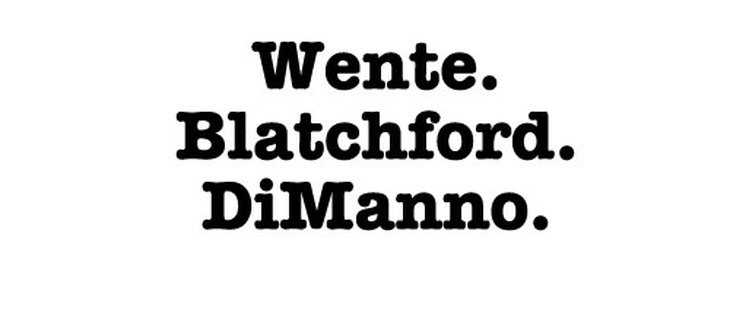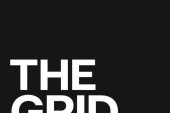
Here’s a quick experiment: read the next two paragraphs while charting any change in heart rate or blood pressure. Rosie DiManno. Christie Blatchford. Heather Mallick. Margaret Wente. Sue-Ann Levy. Leah McLaren. Barbara Amiel. Ready for the second? Royson James. Andrew Coyne. Paul Wells. Haroon Siddiqui. David Olive. Marcus Gee. Ezra Levant. My prediction of reader response at those two lists: for the first, a spike in strong emotion. For some, ranting – I can almost see foam being dabbed from the corners of mouths. My assumption about most of you perusing the second: you nodded at an agreed-upon list of acknowledged sages, perhaps distastefully crinkling a nose at a specific name or two. When it comes to attracting fans and detractors, Canada’s female opinionators undeniably inspire far more passion than their male counterparts. Journalism’s gender balance has stoked heated discussion of late. Last January, after one woman launched a boycott of The New Yorker for its male-dominated mastheads, it was open season on high-minded mags, with The Atlantic, Harpers and The New Republic all lambasted for their equally testosterone-y writer rosters. In March, the International Women’s Media Foundation in Washington released a study announcing that most top editorial jobs go to men, in Canada and elsewhere. The foundation particularly noticed a glass ceiling at Canadian op-ed pages. Of the mainstream rags, Maclean’s has the least amount of female commentators – 15 of the 16 columnists and bloggers on its website are male (all are white). The Toronto Star does the best: its news columnist dropdown menu lists 12 women and 25 men (the ethnicity spread is better, but not ideal for this city). The Toronto Sun and Globe and Mail fit between those two poles. Sadly, this isn’t remotely shocking. What is surprising is that despite this disparity, the majority of Canada’s most famous, most followed, and certainly most controversial columnists are women. And, after taking a quick look at recent offerings by our national pundits, it’s clear that female columnists attract far more bulk – and far more bite – in the comments section. Irrelevant sexist comments on appearance are boring, but I’ll share a few anyway. The Globe‘s Doug Saunders and Marcus Gee are not called “haggard,” unlike their colleague Christie Blatchford. Leah McLaren’s review of Joyce Carole Oates’ A Widow’s Story elicits reference to her bra strap, while relationship columnist Micah Toub’s undergarments never warrant a mention. Comments on a recent piece by Andrew Coyne in Maclean’s weirdly turned into a debate about the looks of politics writer Kady O’Malley, who doesn’t even write for that magazine anymore. The only male opinion writer who attracts close to this level of vitriol is the Toronto Sun‘s Ezra Levant, who a reader once dubbed “a yellow-bellied sow-cowed coward” (an imaginative insult that would possibly thrill any journalist). Things get personal when women write. Male columnists might have their arguments soundly and rudely disagreed with, but rarely does that disagreement include personal attacks. Virtually all female columnists get condescendingly insulted. Chantal Hbert has spent decades authoritatively and reasonably reporting on politics for the Star, but still attracts YouTube comments on her looks. And nothing attracts virulent commentary like the magic formula of combining unabashed opinionating with forays into one’s personal life. The female writers Canadians love to loathe are heterogeneous in their interests. Rosie DiManno and Christie Blatchford ground their work in classic news reporting, with DiManno lately tackling international crises, and Blatchford focusing on regional legal issues. The Sun‘s Sue-Ann Levy has spent 13 years dishing out grandiose far-right takes at City Hall. Leah McLaren is most known for frothy style and culture musings, though she’s recently veered into magazine feature writing. Since 1999, Margaret Wente has written a thrice-weekly, unabashedly bourgeois current affairs column for the Globe; Heather Mallick is now handling a similar portfolio at the Star, with a much more lefty slant. What they have in common is a willingness to wield fiery language and a tendency to draw on personal anecdotes gleaned from chat with chums and romantic partner – whether the topic is a federal election, cancer treatment, traffic snarls, or the sexual attractiveness of emergency services personnel. Most of these women agree that they’re more controversial than their male counterparts, and that part of the reaction they draw stems from the integration of their personal lives into their work. They differ as to why that is. “Women are more analytical problem solvers, and we bring that into our writing,” says Levy. “We are more emotional. Men do not bring emotion into their writing.” Wente and McLaren both think it’s less about gender than about Canada – they feel they’re the juiciest writers in a columnist landscape that’s painfully bland, especially when compared to their counterparts in the U.K. There, a dozen national papers battle for readers, and the only way to be noticed is to have strong opinions and piss people off. Male and female columnists alike get down in the trenches, slinging mud at political figures and each other. “Jeremy Clarkson in Times of London really offends me a lot,” says McLaren, “but I must read him, because his voice is so himself always.” Here, columnists have traditionally been more restrained. Compare Levy trashing the “self-serving…troglodytes” of the TTC union versus her Star counterpart, Royson James, mildly warning that mayor Rob Ford’s transit plan “inspires skepticism and doubt.” Wente dismisses the historical Canadian pundit as “an elder statesman at top of the mountain, disseminating wisdom” – not her preferred role. “It’s more fun to be argumentative,” says Wente. “It’s a way to make your voice heard among the wise old men.” When these arguments are driven by anecdotal evidence, it inevitably causes a whack of Canadian readers to blow their tops: sometimes the cause is schadenfreude; others, jealousy; but often enough it’s because a dinner-party argument isn’t acceptable when the issue at hand is, say, democracy. In March, Frank Rich mused on opinion writing when sharing his decision to leave the relentless daily pace of the New York Times. “That routine can push you to have stronger opinions than you actually have,” Rich wrote, “or contrived opinions about subjects you may not care deeply about, or to run roughshod over nuance to reach an unambiguous conclusion.” The ideal column is certainly fun – or at least dynamic – but energetic opinion writing only works when the opinion is strongly grounded in fact. This is why DiManno and Blatchford work particularly well as columnists: their stories are based on solid reporting, even when their interpretations are wild. Wild opinions aren’t valuable when they’re untrustworthy. Here’s the Canadian column landscape I’d like to see. The elder statesmen (and women) would jazz up their vocabs, so that reading 1,000 words is enjoyable for people other than dedicated policy wonks. The feisty ladies (and dudes) would always ensure that their offerings weren’t just jazzy, but watertight and reliable, too.














